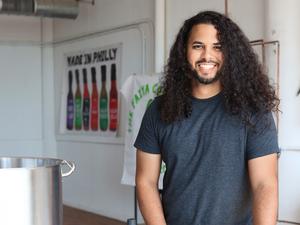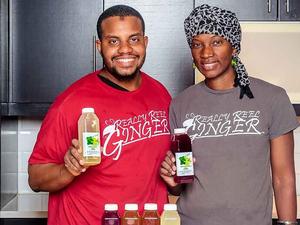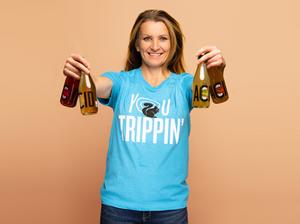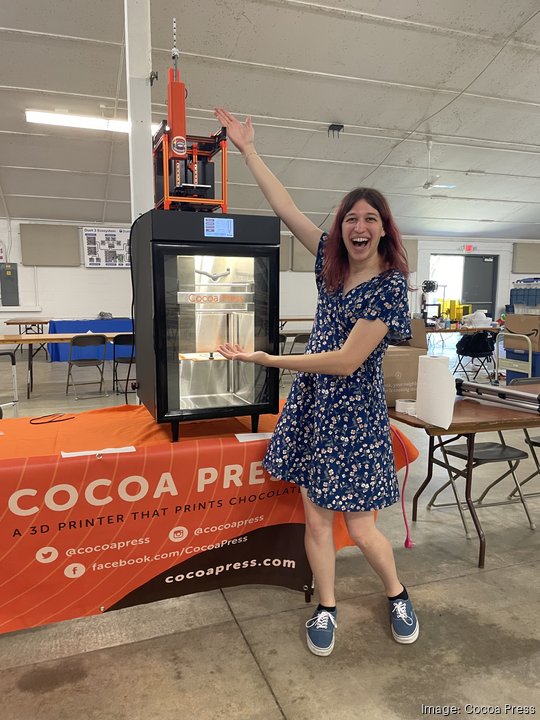
When Ellie Weinstein took an interest in 3D printing as a high school student, she never imagined it would one day become her full-time job. But nearly a decade later it has. Through her Cocoa Press, the University of Pennsylvania alum is looking to strike a sweet spot with the latest iteration of her 3D chocolate printer, expected to launch later this year.
Weinstein’s newest model will come in two options – a professional model and a do-it-yourself kit, which users assemble themselves. The pro model is projected to cost between $3,000 and $4,000 and will include some training, while the DIY version will take about 10 hours assemble and costs around $1,500. Both are a huge decrease from the original Cocoa Press model, which debuted in late 2020 at nearly $10,000.
With the new price points and upgraded hardware, Weinstein hopes the model will resonate with a wider market than the original version. For Weinstein, that will be a range of chocolate shops and bakeries on the professional side, and serious hobbyists on the DIY side.
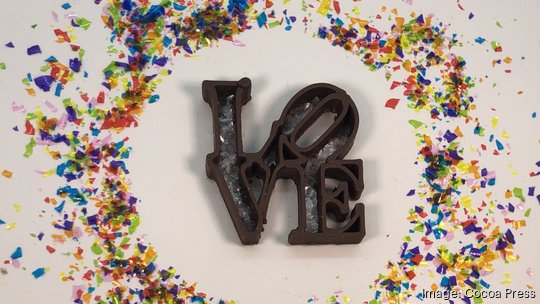
The latter is how she got into 3D printing to begin with.
In 2014 during her senior year at Springside Chestnut Hill Academy in Philadelphia, Weinstein took an intro to engineering class. “I wanted to build something fun that hadn't been done before and decided on a 3D printer for chocolate,” she said. Weinstein figured chocolate would not only be a fun material to work with, but also a safe option since even when melted it’s not a dangerous substance. While safe, she discovered it wasn’t quite as simple as she thought.
She spent years tinkering with different methods and recipes to deliver the end product.
“It just kind of became my obsession and turned from a half-year project to a full-year project and then my hobby during my time at University of Pennsylvania,” she said.
That hobby then morphed into something bigger. When her brother suggested Weinstein enter the now defunct World Maker Faire in New York in 2017 and she was accepted, Weinstein was surprised at the interest Cocoa Press got. Part of the Future Food exhibits, “people started asking if they could buy it,” Weinstein recalled. “And that's when it went from, 'Hey, this is a cool thing that I'm working on,' to 'I might be onto something here. This could be something that could be commercially successful.'”
She ran with that idea and during her senior year at Penn, where she studied mechanical engineering, Weinstein made the concept the focus of her capstone project.
After graduating in 2019, Weinstein was accepted into the Pennovation Accelerator, where she has chipped away at the business since.
Submit a nomination for PHL Inno's 2023 Fire Awards
The idea of 3D printed chocolate remains relatively new, but Weinstein believes it has a number of applications that sets it apart from traditional chocolate casting. “It allows for personalization without the use of custom molds,” she said, noting that many shops turn down such orders because they are too costly or require too much lead time.
The method also allows users to make chocolates in ways “that are just not possible with traditional chocolate making,” Weinstein said. That includes sculptures of nearly anything like people’s faces or even buildings.
With the new printer, Weinstein expects uptake from chocolate shops or even bakeries that customize cakes and cookies but haven’t done much with chocolate before.
“That'll be a place where because we have this easy chocolate loading system, you don't need all the chocolate equipment to actually work with it,” she said.
3D printing works by “slicing” a design and then building it up in layers. Because 3D printing has been commercially available for years, albeit with a large focus on plastic, the design process can be pretty plug and play, Weinstein said. She teaches classes on the process but noted that numerous tutorials are available online. Users have the option of licensing and tweaking existing designs from online repositories or creating custom works from scratch. Once designs are complete, they can be stored on an SD card.
A small chocolate can take as little as five minutes to print, while a more complex sculpture can take up to an hour and a half. Once the design is made and loaded into the printer, though, Weinstein said the actual user’s time is minimal.
In addition to its shape, 3D-printed chocolate also has a unique texture thanks to the layering technique. The infill – the structure that helps maintain a design’s architectural integrity – has an airier quality which Weinstein likened to Nestle’s Aero bar.
More than selling the printer, Cocoa Press will also sell chocolate cartridges. Weinstein has worked with a chocolate shop to create a custom blend. While those will be the simplest option for users, they will also be able to load their own chocolate into the machine. “I want it to be an open system,” Weinstein said.
Weinstein has spent ample time testing out recipes and various iterations of the printers. After discontinuing sales of the first model, Cocoa Press became a “3D print service bureau,” selling custom creations to consumers. Weinstein had dabbled in such sales for Valentine’s Day 2020, just prior to the Covid-19 pandemic, and revisited it in 2021.
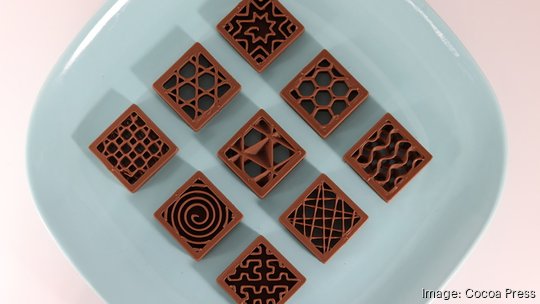
Since then, it has been the sole revenue driver for Cocoa Press. Cocoa Press, which has a total of three employees and contractors, has been bootstrapped with revenue being reinvested. Weinstein’s goal is to eventually discontinue custom chocolate sales and focus solely on the printers themselves, something she hopes the newest launch – expected this summer or fall – will accelerate.
To better gauge demand – and fund their creation – Weinstein is considering a crowdfunding-inspired model where interested consumers can be put down a refundable $100 deposit to reserve a Cocoa Press unit.
Sales of the new model will focus on the U.S. and Canada at launch, and after that Weinstein is looking to partner with other chocolate companies or 3D printer sellers internationally to distribute and sell Cocoa Press. Already she’s had interest from consumers in Brazil, the Czech Republic and Israel.
“I think it's going to be the best chocolate printer out there,” Weinstein said.
